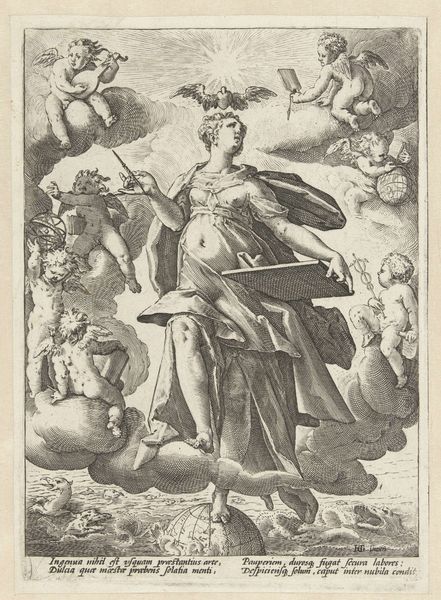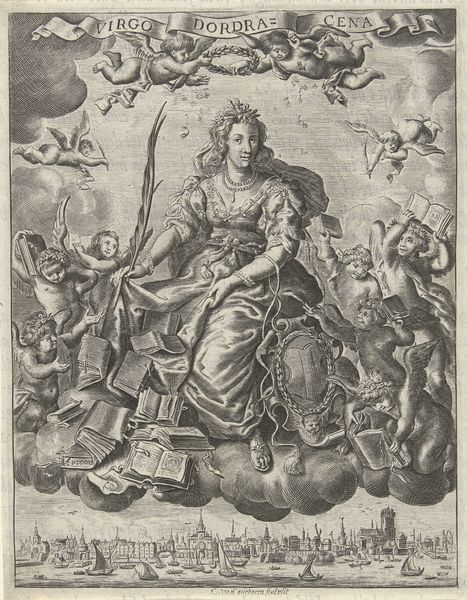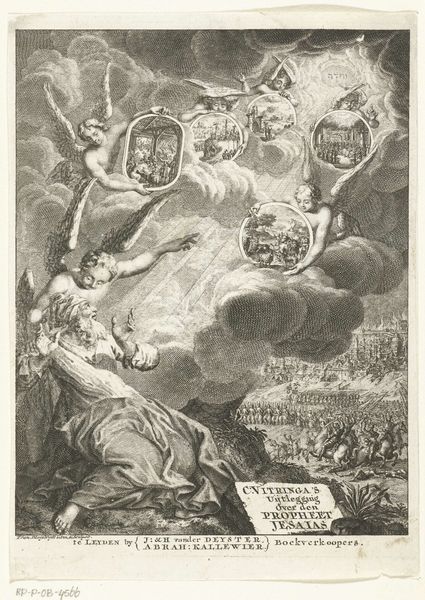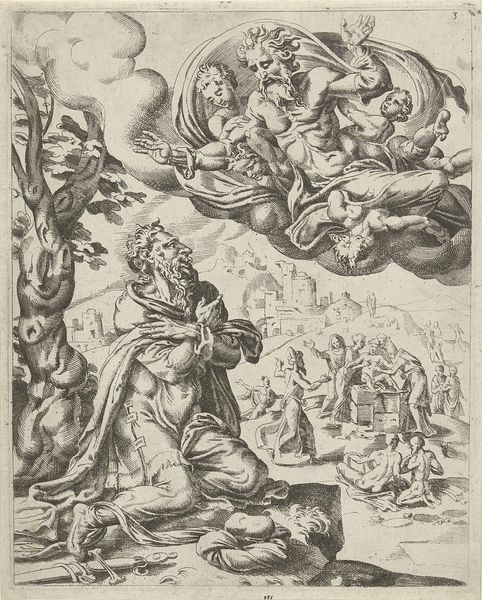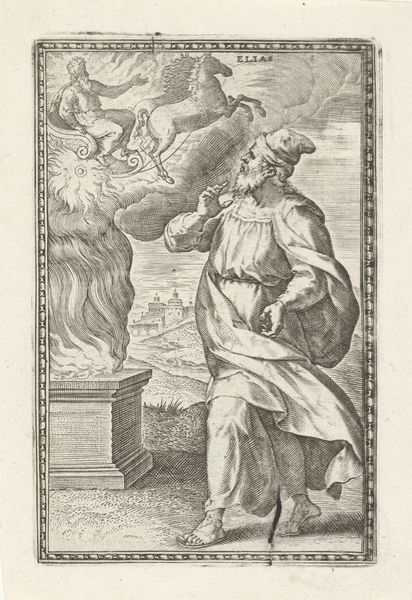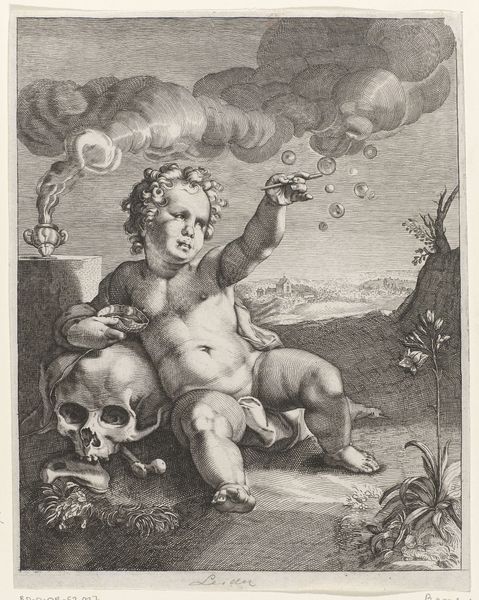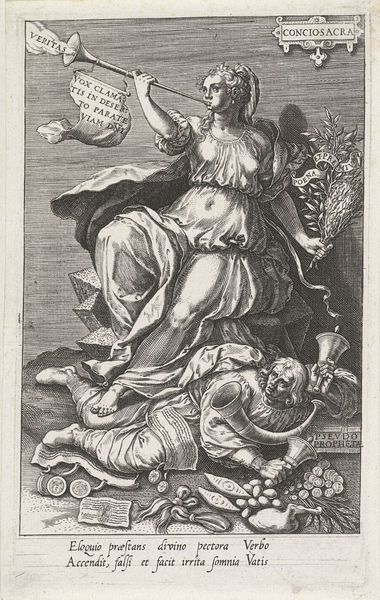
engraving
#
allegory
#
baroque
#
landscape
#
figuration
#
vanitas
#
line
#
history-painting
#
engraving
#
miniature
Dimensions: height 210 mm, width 158 mm
Copyright: Rijks Museum: Open Domain
This print, titled "Allegory of Transience," was made by an anonymous artist using engraving. The work encapsulates the 17th-century concept of "memento mori," a reflection on mortality. Here, a muscular infant sits triumphantly on a skull, blowing bubbles. What does it mean when new life sits atop death? The ephemeral nature of life is captured through the bubbles, symbolizing how fleeting our existence can be. Death is inevitable, yet life—in its nascent, vigorous form—continues, almost mocking death's supposed finality. In an era marked by disease and high infant mortality, this image speaks volumes about the precariousness of life. Flowers bloom on one side, while a smoking urn sits on the other, together these symbols serve as reminders of beauty's decay and life's fleeting essence. "Who shall escape?" the text proclaims, highlighting a collective destiny we often ignore. The emotional tension between innocence and decay urges us to acknowledge life's beauty while remaining mindful of its transience. It's a paradox of existence. The artwork asks: How do we embrace life's fleeting moments without forgetting our inevitable end?
Comments
No comments
Be the first to comment and join the conversation on the ultimate creative platform.


